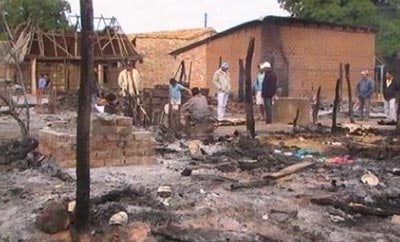A village in Sinaloa, Mexico was burned to the ground by armed men in an attack likely linked to the ongoing battle between the Beltran Leyva Organization and the Sinaloa Cartel for control of Mexico’s “Golden Triangle” region.
Preliminary investigations suggest a large group of heavily armed men arrived in the village of Las Tatemas on the morning of November 24 and opened fire on residents. After a brief confrontation, the armed group set about torching the villagers’ houses, local media reported.
Reports of the attack reached the authorities the same day, but police only began investigations four days later. When they arrived they found the town abandoned and the majority of houses destroyed.
The charred remains of two people have been found so far and authorities have not ruled out the possibility that more died in the attack.
InSight Crime Analysis
Over the last year, thousands of people have been driven from their homes by the battle between the Sinaloa Cartel and the Beltran Leyva Organization over the prized drug production territory of the so-called “Golden Triangle.”
The region, which is the birthplace of both previously allied organizations, is the epicentre of Mexican marijuana and poppy production and authorities believe it is also home to many industrial-sized methamphetamine labs.
The Sinaloa Cartel and the BLO have been locked in a deadly conflict since their acrimonious split in 2008. The ensuing violence, along with several high profile arrests, has left the BLO severely weakened. Nevertheless the BLO, sometimes working alongside the Zetas or the Juarez Cartel, have recently been making incursions into Sinaloa state and the Golden Triangle, in an attempt to claim control of territories ceded to the Sinaloa Cartel, and this latest attack is likely to be linked to the resulting conflict.
The situation in the region is further complicated by small, mostly blood-related criminal clans known as “gavillas,” who have operated in the region since the Mexican civil war. The gavillas remained quiet and controlled when one organization dominated the region, but the conflict has has forced numerous gavillas into choosing sides or, in at least one case, break off on their own, and since then they have been blamed for attacks similar to the assault on Las Tatemas.

